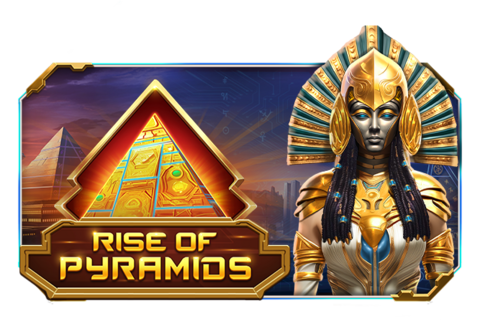
Rise of Pyramids Slots
The allure of ancient civilizations has always captivated the imagination of many, and perhaps no civilization is as fascinating as that of Ancient Egypt. From its grandiose monuments to its rich tapestry of mythology, Ancient Egypt offers a plethora of stories, mysteries, and adventures waiting to be explored. One modern way to immerse yourself in this ancient world is through engaging games like Rise of Pyramids Slots. These captivating online slot games not only entertain but also evoke the nhà cái 33win enchantment associated with one of history’s most iconic cultures. As we embark on this adventurous journey through the sands of time, we will explore the marvels of Ancient Egypt and how they resonate in contemporary interpretations such as gaming.
The Wonders of Ancient Egyptian Architecture Rise of Pyramids Slots
The architecture of Ancient Egypt stands as a testament to human ingenuity and ambition. Monumental structures like the Pyramids, temples, and tombs are more than mere buildings; they symbolize the beliefs, values, and social structure of the time.
The Great Pyramid of Giza: A Marvel of Engineering
The Great Pyramid of Giza is often the first structure that comes to mind when discussing Ancient Egyptian architecture. Built during the Fourth Dynasty around 2580-2560 BC, it was originally constructed as a tomb for Pharaoh Khufu. What makes this pyramid particularly remarkable is not just its size, but the engineering prowess required to construct such a massive edifice without modern technology.
The precision with which the Great Pyramid was built is astonishing. It consists of approximately 2.3 million blocks of stone, each weighing between 2.5 tons to 15 tons. To achieve such accuracy, the ancient Egyptians developed advanced techniques involving ramps, levers, and a workforce that showcased exceptional organizational skills.
Modern researchers have studied these methods extensively, and while some theories may differ, the consensus underscores an immense collaborative effort that spanned decades. This draws intriguing parallels to today’s large-scale construction projects where teamwork and innovative engineering are paramount.
The Great Pyramid of Giza is not just an architectural wonder; it is a profound symbol of the pharaoh’s absolute power and the significance of the afterlife. In Egyptian culture, the belief in life after death dictated much of their building practices. The pyramids acted as gateways for the pharaohs to ascend to the heavens, emphasizing the connection between earthly existence and the divine.
Karnak Temple Complex: A Spiritual Hub
Another significant architectural feat is the Karnak Temple Complex, located in Luxor. This sprawling complex served as a major religious center dedicated primarily to the god Amun-Ra. Spanning over 200 acres, it encompasses multiple temples, chapels, and shrines, showcasing the evolution of Egyptian architecture over centuries.
The sheer scale of Karnak is breathtaking. Its Hypostyle Hall, with 134 massive columns, creates a forest of stone that allows natural light to filter through, casting ethereal shadows. Each column is adorned with intricate hieroglyphics and reliefs depicting various deities and pharaohs, telling stories of divine interactions and royal accomplishments.
Walking through Karnak is akin to traversing time itself. Each stone whispers tales of devotion, celebration, and sometimes, conflict. Festivals were held here to honor the gods, bringing together people from all walks of life. This communal aspect of worship reflects the importance of religion in everyday life during Ancient Egypt, providing valuable insights into their societal values.
Karnak also serves as a reminder of how architecture can shape cultural identity. Just as the Rise of Pyramids Slots aims to create an immersive experience of ancient themes, the temples of Karnak were designed to instill reverence and awe among visitors, thus reinforcing the divine authority of the pharaohs.
The Tombs of the Valley of the Kings
While pyramids were initially popular burial sites, by the New Kingdom period, pharaohs began to favor hidden tombs in the Valley of the Kings. This shift was primarily motivated by the desire to protect royal burials from grave robbers.
The tombs in this valley exhibit a level of artistry that rivals the grandeur of the pyramids. Each tomb is intricately decorated with detailed frescoes and hieroglyphs that depict the deceased’s journey to the afterlife. The stories told within these walls reflect the core tenets of Egyptian spirituality, emphasizing resurrection and eternal life.
What sets the Valley of the Kings apart is not just the artistry but also the diversity of its occupants. Renowned pharaohs like Tutankhamun and Ramses II lie within these tombs, each offering unique artifacts and treasures that provide insight into the daily lives, beliefs, and customs of the ancient Egyptians.
Furthermore, the discovery of King Tutankhamun’s tomb in 1922 reignited global interest in Ancient Egypt. The treasures found within—golden masks, jewelry, and everyday items—painted a vivid picture of the opulence and complexity of ancient life. Such discoveries continue to inspire fascination with Egypt, leading to cultural expressions in literature, film, and even online gaming, where themes from this era are exuberantly brought to life Rise of Pyramids Slots.


